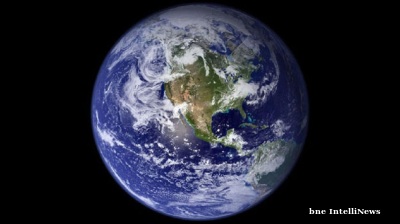Having a reliable electricity supply is something many of us take for granted – including for sending and reading emails like this one. But hundreds of millions of people around the world today don’t have access to even the most essential electricity services like basic lighting.
For most of this century, the number of people lacking access to electricity worldwide declined at a healthy clip as hundreds of millions of people – mostly in Asia but also in Africa and Latin America – were connected to the grid. But as a result of the pandemic, progress stalled. And in 2022, the number of people globally without access to electricity actually increased for the first time in decades amid soaring inflation and the energy crisis.
This reversal raised concerns about continued progress on this critical issue. Under the UN Sustainable Development Goals, the world is aiming for all people to have electricity access by 2030.
Our latest data and analysis shows that in 2023, the number of people without electricity globally began to decline again, though at a considerably slower rate than before 2020. Another modest improvement is expected this year.

One recent success story has been among emerging and developing economies in Asia. More than half a billion people in this region have gained access to electricity in the past decade.
India and Indonesia both reached universal access between 2021 and 2022, and Bangladesh hit the milestone in 2023. More than 70% of countries in the region have achieved access rates above 90%.

Still, delivering universal electricity access remains a global challenge. The most severe gap is in sub-Saharan Africa where, despite progress before the Covid pandemic, nearly 600mn people currently live without electricity. That is 80% of the global total.
After three years of regression, new electricity connections in sub-Saharan Africa accelerated again in 2023. One important contributor was the surge in home solar-based systems, which accounted for more than a third of the region’s new connections in 2023. Just a decade ago, installation of these systems was negligible. The pace of new grid connections also rebounded, approaching the levels seen before the pandemic.

Globally, policies on access to electricity are improving – as are measures to expand access to clean cooking solutions, which more than 2bn people currently lack around the world. According to IEA analysis, policies have recently improved in countries that represent more than 30% of the population without electricity or clean cooking access.
More details on the latest IEA data and analysis on energy access can be found in our flagship World Energy Outlook 2024 report. You can also learn more about the IEA’s work and findings in this area on our dedicated webpage. Additionally, we and other several international organisations are the joint global custodians of UN Sustainable Development Goal 7, which looks to “ensure access to affordable, reliable, sustainable, and modern energy for all”. Together, we publish an annual report on progress towards achieving the goal. You can explore the latest edition here.
This article first appeared in the IEA’s Energy Snapshot newsletter. Sign up here.
Opinion

COMMENT: Hungary’s investment slump shows signs of bottoming, but EU tensions still cast a long shadow
Hungary’s economy has fallen behind its Central European peers in recent years, and the root of this underperformance lies in a sharp and protracted collapse in investment. But a possible change of government next year could change things.

IMF: Global economic outlook shows modest change amid policy shifts and complex forces
Dialing down uncertainty, reducing vulnerabilities, and investing in innovation can help deliver durable economic gains.

COMMENT: China’s new export controls are narrower than first appears
A closer inspection suggests that the scope of China’s new controls on rare earths is narrower than many had initially feared. But they still give officials plenty of leverage over global supply chains, according to Capital Economics.

BEYOND THE BOSPORUS: Consumed by the Donald Trump Gaza Show? You’d do well to remember the Erdogan Episode
Nature of Turkey-US relations has become transparent under an American president who doesn’t deign to care what people think.




